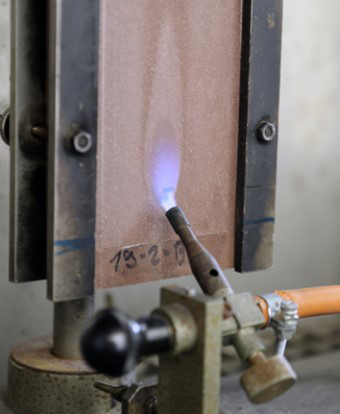In buildings, vehicles, transport containers and electronic devices, sustainable materials on the basis of renewable raw resources are being utilized increasingly often. These must fulfill strict fire-protection requirements. We are therefore developing suitable flame retardants and flame-retardant coatings, for example for wooden components and bio-based composites. Our focus is directed towards the use of biogenic raw materials, halogen-free solutions, and the durability of the flame-retardant effect.
Flame protection
Research topic

Biogenic raw materials
One main focus of our work concerns the development of economic synthesis strategies for novel, halogen-free flame retardants. We thereby take the future application area into consideration as early as during the production of the flame retardants. Through a targeted design of the chemical structure, we aim to achieve an optimal interaction between the flame-retardant effect, durability, processability and miscibility with the material which is to be protected.
Flame protection for wood
Flame-retardant coatings for application on wood and wood-based materials require high weather resistance, particularly in outdoor situations. We develop solutions which prevent the intumescent flame retardants from being washed out. As a result, the wood coating retains its flame-retardant effect over a long period of time.
Flame protection for bioplastics and composite materials
We modify bioplastics and biopolymers such as lignin in order to improve their flame retardancy. The formulations of the compounds are optimized with regard to the end-use application.
Combined functionalities
Furthermore, we extend the effect of our flame retardants above and beyond flame retardancy. This includes, for example, the production of adhesion promoters with flame-retardant effects, and flame retardants with radiation-curing functions.
 Fraunhofer Institute for Wood Research
Fraunhofer Institute for Wood Research